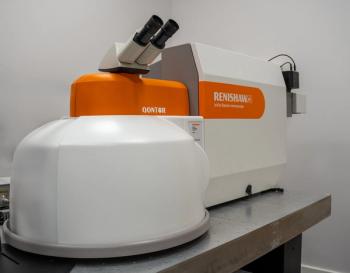
WITec Honors Researchers for Outstanding Scientific Publications
In this year’s WITec Paper Awards, research groups from Poland, Switzerland, and Singapore won the gold, silver, and bronze awards, respectively. These annual awards honor outstanding scientific publications that feature results acquired with a WITec instrument. Scientists from all over the world submitted more than 80 publications to this year’s competition. A jury chose the three winning papers; selection criteria included the impact of the scientific results and the originality of the applied techniques.
Katarzyna Marzec received the gold award for her work on heme oxidation in red blood cells (erythrocytes). Hemes are the oxygen binding components of hemoglobin, the red pigment in blood. In the paper “High resolution Raman imaging reveals spatial location of heme oxidation sites in single red blood cells of dried smears,” Marzec and her colleagues from the group of Malgorzata Baranska, Jagiellonian University, in Krakow, Poland, documented for the first time the spatial distribution of Fe2+/Fe3+ hemes inside single enythrocytes by combining various microscopic techniques including confocal Raman imaging, atomic force microscopy, and scanning near-field optical microscopy. This work convinced WITec’s jury by illustrating the beneficial application of confocal Raman imaging combined with atomic force microscopy for research in life sciences.
Martin Süess, from the ETH University in Zurich, Switzerland, won the silver award. Süess, from the group of Ralph Spolenak, together with other Swiss and French colleagues, analyzed strain in complex three-dimensional nanobridges. Their paper, “Power-dependent Raman analysis of highly strained Si nanobridges,” describes how a combination of micro-Raman spectroscopy and finite element analysis is used to develop a better understanding of strain on silicon nanobridges.
The bronze award winners are researchers from the Department of Physics at the National University of Singapore. Chunxiao Cong and Ting Yu published a study on folded graphene titled “Enhanced ultra-low-frequency interlayer shear modes in folded graphene layers.” Through comprehensive Raman imaging studies, the scientists analyzed shear modes in few-layer graphene that, due to their extremely weak signal, are very difficult to detect.
WITec recently announced the 2016 WITec Paper Award 2016 for research published in 2015. Scientists from all fields of application in both academia and industry are invited to submit their publications featuring results acquired with a WITec instrument to papers@witec.de.
Newsletter
Get essential updates on the latest spectroscopy technologies, regulatory standards, and best practices—subscribe today to Spectroscopy.



